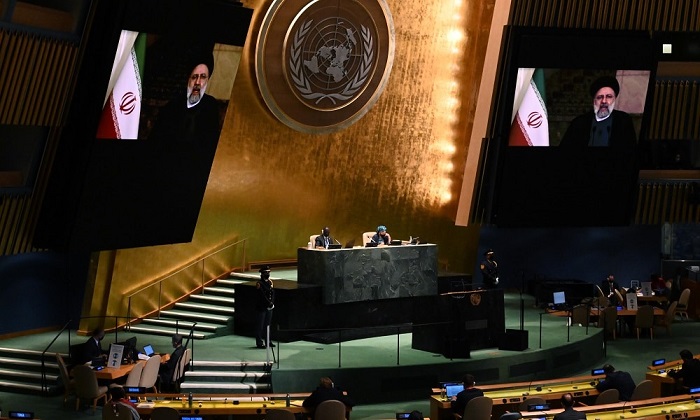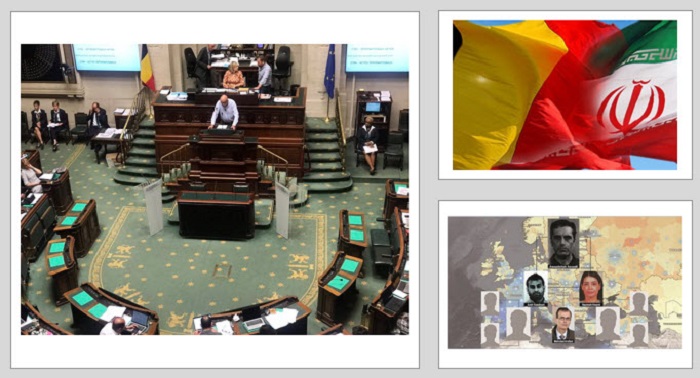
Earlier this month, it was reported that Iranian regime President Ebrahim Raisi would most likely be granted a visa to visit New York for the United Nations General Assembly. The announcement of an indictment-in-absentia for an Iranian agent who planned to kill former US national security adviser John Bolton and former US Secretary of State Mike Pompeo came shortly after that news.
The most recent incidents serve to highlight both this fact and Raisi’s role in escalating the threat since he assumed his position in June of last year.
As developments inside Iran continue to validate them, Raisi’s potential attendance at the UN General Assembly confirms that Western policymakers are still opting for appeasement.
More than twice as many people have been put to death in the first half of 2022 as in the first half of 2021, which is a particularly horrifying statistic given that Iran leads the world in terms of executions per person on an annual basis.

And this does not even take into account the number of prisoners, including political prisoners, who pass away each year in Iranian detention facilities as a result of harsh conditions and wilful denial of access to life-saving medical care.
Over the past year, there have been numerous reports of this kind of mistreatment as well as numerous reports of politically motivated arrests against the backdrop of ongoing anti-government demonstrations.
Given Raisi’s history as a clerical judge, public prosecutor, and most recently, chief justice of the nation’s judiciary, the escalating climate of repression is exactly what one might have anticipated under his administration.
Raisi was one of four members of the Tehran “death commission” tasked with interrogating detainees at Evin and Gohardasht Prisons to determine whether they had any lingering sympathies with the leading pro-democracy opposition group, the People’s Mojahedin of Iran (PMOI/MEK).
The mandate for the death commission stemmed from a fatwa similar to the one issued against Rushdie the following year, except in this case, the target of Ayatollah Khomeini’s death sentence was an entire segment of the domestic population opposed to tyrannical theocracy.
Raisi’s eager execution of that death sentence was a long-term career booster for him, and it’s possible to argue that this was a key factor in Supreme Leader Ali Khamenei of the regime elevating him first to the position of head of the judiciary and then to the presidency.
In the wake of the nationwide uprising that shook the clerical regime at the beginning of 2018, Khamenei was at the time attempting to consolidate his position of authority and increase repression.
As a result, the IRGC started firing on protests in numerous cities in November 2019, killing at least 1,500 people. Raisi’s judiciary also began a months-long campaign of torture against many of the people who were detained during the violence.
Authorities in Albania discovered a plan to use a truck bomb against the MEK’s national headquarters in March 2018. The National Council of Resistance of Iran (NCRI) organized an international gathering of Iranian expatriates close to Paris, and that June, another attack against it was thwarted in Western Europe.
The mastermind of that plot, an Iranian diplomat named Assadollah Assadi, was given a 20-year prison sentence by a Belgian court last year, but the investigation that led to his conviction showed that he had been in contact with several other operatives who were spread out across much of the continent.

While Raisi continues to be the subject of an invitation to attend the UN General Assembly next month, it is possible that the Western leaders will echo this message. Raisi’s presence in New York, unless it results in his arrest, can only be seen as a symbol of the US willingness to turn a blind eye to the terrorist threats that he has undoubtedly presided over as president of the Iranian regime.
 MEK Iran (follow us on Twitter and Facebook), Maryam Rajavi’s on her site, Twitter & Facebook, NCRI (Twitter & Facebook), and People’s Mojahedin Organization of Iran – MEK IRAN – YouTub
MEK Iran (follow us on Twitter and Facebook), Maryam Rajavi’s on her site, Twitter & Facebook, NCRI (Twitter & Facebook), and People’s Mojahedin Organization of Iran – MEK IRAN – YouTub







